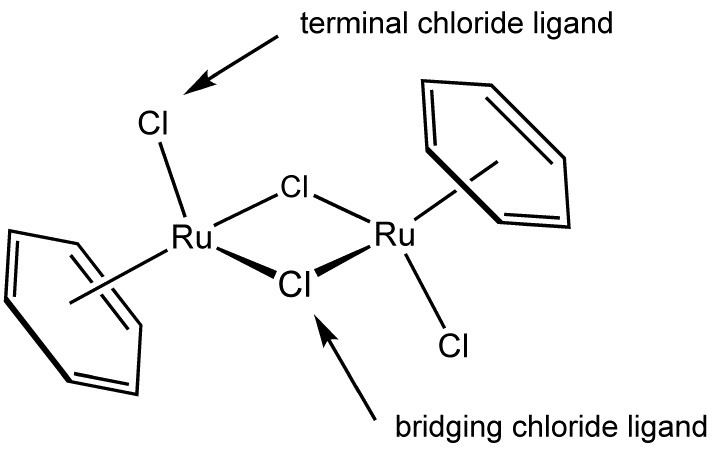 | ||
In coordination chemistry, a bridging ligand is a ligand that connects two or more atoms, usually metal ions. The ligand may be atomic or polyatomic. Virtually all complex organic compounds can serve as bridging ligands, so the term is usually restricted to small ligands such as pseudohalides or to ligands that are specifically designed to link two metals.
Contents
In naming a complex wherein a single atom bridges two metals, the bridging ligand is preceded by the Greek character 'mu', μ, with a subscript number denoting the number of metals bound to the bridging ligand. μ2 is often denoted simply as μ. When describing coordination complexes care should be taken not to confuse μ with η ('eta'), which relates to hapticity. Ligands that are not bridging, are called terminal ligands (see figure).
List of bridging inorganic ligands
Virtually all ligands are known to bridge, with the exception of amines and ammonia. Common inorganic bridging ligands include most of the common anions.
Many simple organic ligands form strong bridges between metal centers. Many common examples include organic derivatives of the above inorganic ligands (R = alkyl, aryl): OR−, SR−, NR2−, NR2− (imido), PR2− (phosphido, note the ambiguity with the preceding entry), PR2− (phosphinidino), and many more.
Examples
Bonding
For doubly bridging (μ2-) ligands, two limiting representation are 4e and 2e bonding interactions. These cases are illustrated in main group chemistry by [Me2Alμ2-Cl]2 and [Me2Al(μ2-Me)]2. Complicating this analysis is the possibility of metal-metal bonding. Computational studies suggest that metal-metal bonding is absent in many compounds where the metals are separated by bridging ligands. For example, calculations suggest that Fe2(CO)9 lacks an Fe-Fe bond by virtue of a 3-center 2-electron bond involving one of three bridging CO ligands.
Polyfunctional ligands
Polyfunctional ligands can attach to metals in many ways and thus can bridge metals in diverse ways, including sharing of one atom or using several atoms. Examples of such polyatomic ligands are the oxoanions CO32− and the related carboxylates, PO43−, and the polyoxometalates. Several organophosphorus ligands have been developed that bridge pairs of metals, a well-known example being Ph2PCH2PPh2.
